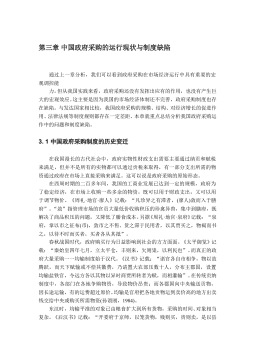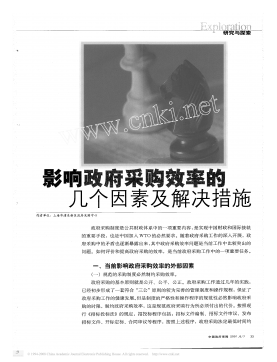保障性住房供求问题研究——以上海市为例
摘要自1998年我国住房制度改革以来,上海市的房地产业得到了迅猛的发展,并对经济增长起到积极的带动作用。同时房地产市场的过快发展也带来了一系列的社会问题,房价过高,越来越多的人买不起房。房地产关系到国计民生。近年来,为了抑制房价的迅速攀升和应对部分城市房价过高,政府已加大对保障性住房的建设,使得更多的中低收入家庭能够从中受益。从对宏观经济的影响来看,加大对保障性住房的投资也有利于经济“软着陆”。保障性住房市场潜力很大,能带动建筑建材、钢铁业、轻工家具等上下游关联产业的发展,部分弥补商品房投资下降对经济的影响。保障性住房的供给对象主要是中低收入阶层。影响保障性住房供给和需求的因素很多。本文先是对...
相关推荐
-
南京监狱罪犯危机干预系统评估报告VIP免费

 2024-10-15 6
2024-10-15 6 -
中国政府采购制度研究VIP免费

 2024-10-15 9
2024-10-15 9 -
政府采购运行效率要素分析VIP免费

 2024-10-15 7
2024-10-15 7 -
政府采购效率浅析VIP免费

 2024-10-15 7
2024-10-15 7 -
政府采购的效率从何而来VIP免费

 2024-10-15 7
2024-10-15 7 -
正确的政府采购效率观VIP免费

 2024-10-15 6
2024-10-15 6 -
影响政府采购效率的因素分析及对策VIP免费

 2024-10-15 7
2024-10-15 7 -
影响政府采购效率的几个因素及解决措施VIP免费

 2024-10-15 8
2024-10-15 8 -
学好政府采购法_提高中央国家机关单位政府采购工作效率VIP免费

 2024-10-15 13
2024-10-15 13 -
完善政府采购法规提高政府采购效率VIP免费

 2024-10-15 18
2024-10-15 18
相关内容
-

创青春-公益创业赛项目书
分类:行业资料
时间:2025-01-09
标签:无
格式:DOCX
价格:10 积分
-

茶文化-剪纸公益项目计划书
分类:行业资料
时间:2025-01-09
标签:无
格式:DOC
价格:10 积分
-

xxx公益创业大赛策划书
分类:行业资料
时间:2025-01-09
标签:无
格式:DOC
价格:10 积分
-

“筑爱助残-共享阳光”公益项目说明书
分类:行业资料
时间:2025-01-09
标签:无
格式:DOC
价格:10 积分
-

2017 常州市继续教育公共《创新案例专题讲座》考题
分类:行业资料
时间:2025-03-06
标签:2017 常州 继续教育 公共 创新案例专题讲座
格式:DOCX
价格:5 积分






